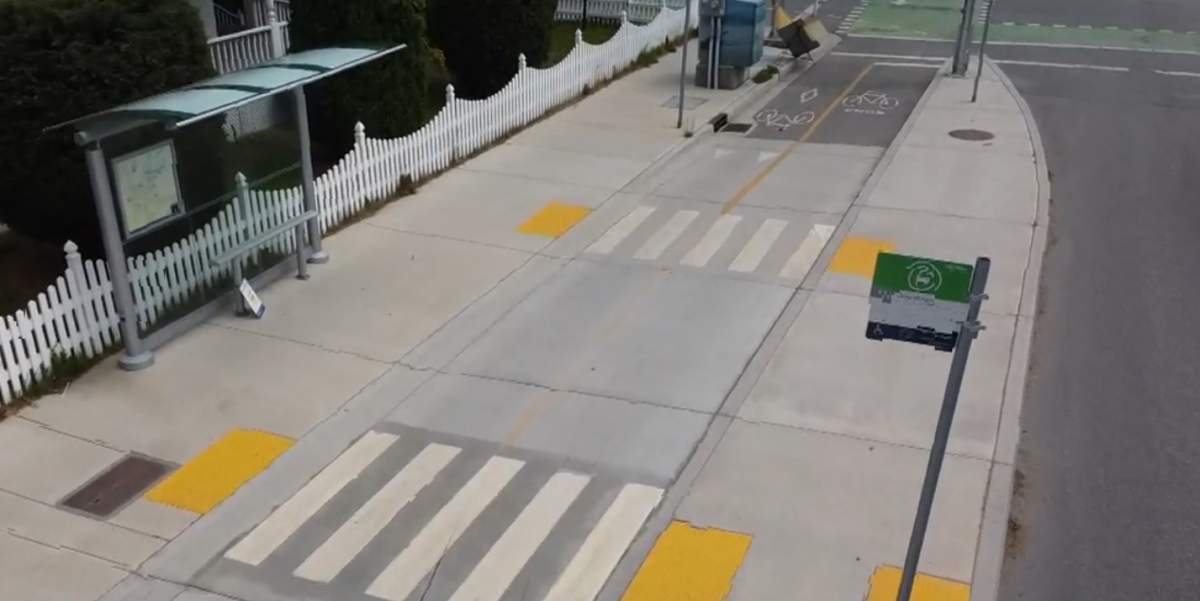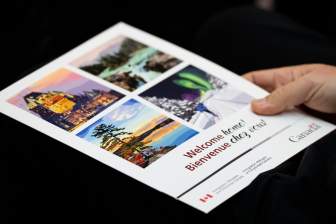Concerns about floating bus stops in Kelowna have been brought to city council.

Traditionally, public buses pick up and drop off transit riders at pre-arranged curb stops.
Floating bus stops do away with buses pulling over to the right by having ‘islands’ placed between bike lanes and the road.
However, some visually impaired residents say crossing bike lanes to access the island is proving to be dangerous.

“I cannot hear bicycles coming when I try to cross the bike lane,” Mary Ellen Gabias told Global News.
“This is not acceptable, to deprive a significant portion of the city of safe use of bus stops. They were always there for us to use in the past.”

Get daily National news
The City of Kelowna tried adding rumble strips to increase the noise of bicycles, to no avail.
In 2020, the B.C. Human Rights Tribunal found that the City of Victoria had violated the rights of blind pedestrians by creating floating bus stops. Similar rulings have not been made in Kelowna.
In response to the ruling, Victoria added verbal commands to walk lights beside floating bus stops. But Gabias says there’s still more that can be done.
“It has a voice that says ‘Yellow warning light is flashing, warning bicycles may not stop.’ Why that’s supposed to assure me, I don’t know,” said Gabias.

The Canadian National Institute of the Blind has also raised concerns. Last September, it released a report on how these transit stops could be improved.
“Knowing which direction the cyclists are coming from, and if and when they’re coming,” said Tommy Leung of the CNIB, “it’s another challenge, a safety concern.”
Gabias has one steady message.
“Don’t do it at the expense of pedestrians who don’t have the option of driving their own vehicle or a bicycle.”
- Canada’s grocery code of conduct is coming in 2026. What it means for you
- New citizenship rules now in effect for ‘Lost Canadians.’ What to know
- ‘I’m getting lots of inquiries’ from MPs looking to join Liberals: minister
- 3 kids die from influenza A-related complications since start of December in Ontario








Comments